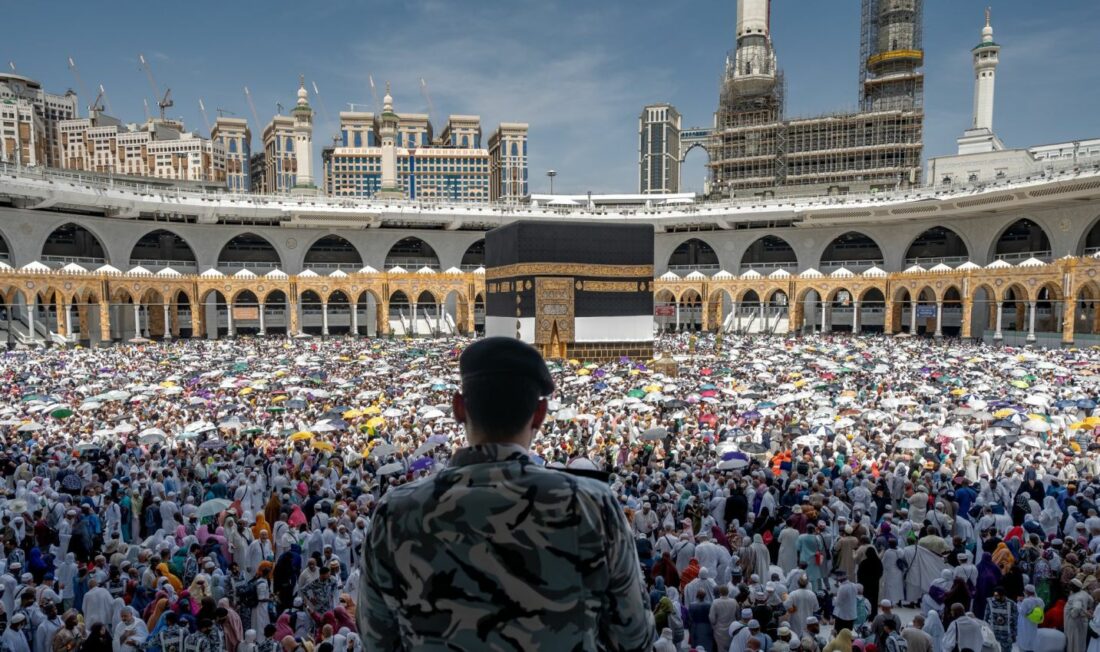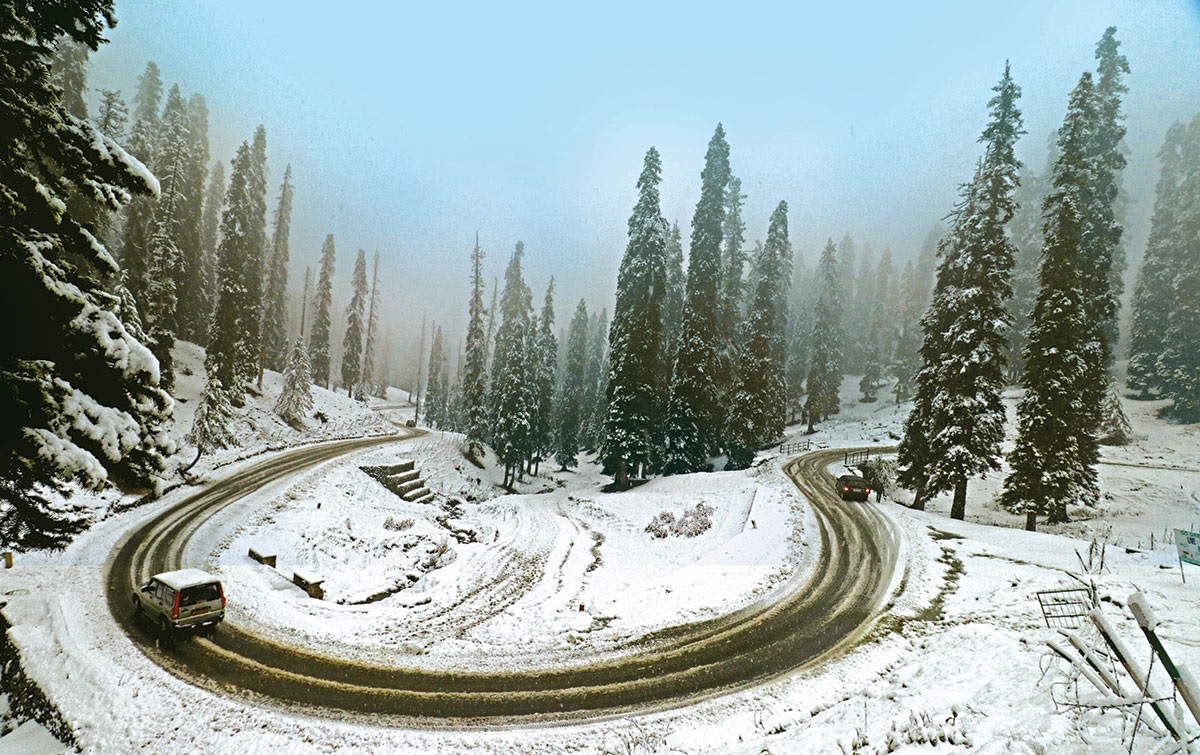For Jammu and Kashmir, the Hajj 2023 was a mix of many interesting firsts, reports Syed Shadab Ali Gillani
For Jammu and Kashmir, Hajj 2023 had many firsts. It sent the highest number of pilgrims on Hajj – 12534 including 467 from Ladakh. For the first time, 115 women performed Hajj without a Muharram, a close relative who could be a husband or a blood relative. For the first time, the pilgrims from Kashmir paid the highest fare for the Hajj, in comparison to all other stations wherefrom they were flown to Saudi Arabia. Again, for the first time, the highest number of pilgrims passed away – 12.

However, it was a different first that dominated the news – the Hajj Committee’s failure to manage better lodging and guiding facilities. Many pilgrims alleged that their sacred journey turned into a challenging ordeal as they faced numerous problems due to the inadequate services provided by the Committee. From overcrowded and ill-equipped accommodations to a lack of basic facilities, their hardships dampened what should have been a profound and transformative experience.
Details Revealed
“There are reports about poor accommodation provided to Kashmiri Hajj pilgrims in Madina,” Communist lawyer and senior politician, Mohammad Yousuf Tarigami tweeted. “More than six pilgrims were crammed into single-room accommodations with rickety furniture. They were forced to use shared and filthy washrooms. The subpar stay arrangements have caused immense hardships to the pilgrims, particularly women. The pilgrims feel betrayed by the Hajj Committee of India.”
Pilgrims shared their experiences, revealing the challenges they encountered during what was supposed to be a smooth journey.
Speaking anonymously, a Hajj pilgrim revealed that over 600 pilgrims were accommodated in a hotel lacking even the most basic facilities. “I am referring to basic amenities like toilet facilities. Irrespective of our ages, we were forced to wait in lengthy queues outside the limited number of toilets,” the pilgrim alleged. Another pilgrim, also speaking anonymously, added, “The washroom doors were also malfunctioning, causing discomfort for many. Additionally, there was a lack of running water facility in the washrooms, with women being the most affected.”
The pilgrims also faced issues with kitchen facilities. “We had no refrigeration, and Saudi Arabia’s scorching heat made it even more challenging, as we worried our food items might go stale,” stated a female pilgrim. “Furthermore, there was no privacy; it made me very uncomfortable. The room I stayed in was overcrowded, accommodating six other people beyond its capacity. Sharing the room left no space for personal privacy, which is especially important for women.”
Recently, a video went viral on social media, highlighting the deteriorated condition of the washrooms the pilgrims were provided, drawing a significant public backlash.
“I had to share a room with eight people in a hotel in Madina,” Rubina Khan, another female pilgrim from Srinagar, expressed her discomfort. “It was highly uncomfortable because females need their own spaces, which we didn’t get.” She complained that the room was small, and there were too many roommates, making the situation even more challenging.
Insufficient Facilities
Considering Saudi Arabia’s known high temperatures, the pilgrims’ situation was worsened by the absence of air conditioning facilities, making the pilgrimage even more gruelling and exhausting.
“Pilgrims from various parts of the country, who arranged their Hajj through the Hajj Committee of India, have been expressing their discontent. This dissatisfaction is not limited to pilgrims from Kashmir alone,” a private Hajj agency operator from Srinagar revealed. “The pilgrims who availed the government quota were assigned hotels far away from the places they needed to visit.” Insisting that surging mercury exacerbated the complaints. “They had subpar facilities for boarding and food.”
This year, the Hajj Committee allotted only 400 seats to the private tour operators. They also denied any allotment to two operators while two new operators were added this year. “Demand was better, so almost 600 pilgrims from Jammu and Kashmir choose to perform Hajj with tour operators from outside Jammu and Kashmir,” one operator said. “I believe more than 1000 people availed the services of private tour operators from Jammu and Kashmir.”
Another private Hajj operator said that India’s Hajj Committee delayed the selection of the buildings. “Building Selection Team (BST) came too late and by then the main accommodation had been occupied,” the operator said. “Besides, the costs have hugely changed as facilities have gone too expensive and there is a possibility that part of the pilgrims might have had the buildings far away.”
The operator said the private players avoid buildings and hire hotels close to the Kaaba and the Masjid-e-Nabvi. “But our costs are too high, our service starts from Rs 10.50 lakh, nearly double what the Hajj Committee seeks.”
The delayed response to the arrangements from various countries has led the Saudi government to put a deadline for various processes, reports said. “By 2024, the Saudi government will now know everything by March as the new systems will not permit delayed responses from various countries,” one insider said.
No Volunteers
Barkat Ali, a pilgrim from Baramulla said the lack of volunteers was the biggest problem they faced. “In Makkah, the main problem was the lack of proper and timely information for pilgrims,” he said. “There were no volunteers from India available during the five days of Hajj. In contrast, volunteers from many other countries were seen everywhere, assisting their people.”
However, he pointed out that the accommodation problem was limited to only a few hotels. “We had to cover maximum distances on foot, and even educated people couldn’t find their tents easily,” he said. “They would end up spending the whole day searching and walking 10 to 18 km just to reach their tents.”

Rubina also said the lack of information was the main challenge. “We don’t know much about going from Makkah to Madina and Arabic is not our first language and that was a problem.” One of the pilgrims who flew home on the first flight said angrily: “I am extremely upset with the lack of basic facilities. The government failed and everything was difficult for us.”
A couple, currently still in Saudi Arabia, expressed their frustration, stating, “There was no coordination at all; everything seemed very chaotic. We suffered a lot. The transportation was very far, and we had to walk long distances to reach the buses due to lacking coordination. It was a time of hardship during Hajj.” They also mentioned hearing about some issues in Madina but clarified that they had not travelled there yet.
Farooq Ahmed, a pilgrim in his mid-sixties from South Kashmir, emphasized the difficulties he and his wife faced, as they were placed with unfamiliar people. “Not just that, but even the quality of the hotel rooms was not good,” he lamented.
‘Issues Were Addressed’
Admitting problems, a senior official said the pilgrims are supposed to have shared accommodations. “Normally, 20 per cent of the pilgrims get lodging slightly away unlike the 80 per cent,” he said. “This year, the first few groups got the distant buildings and that narrative dominated the entire Hajj.” He, however, admitted that problems flagged by the pilgrims were quickly addressed. This year, 31 individuals including a female had flown as Khadim, who work as guides.
This season, the desert kingdom managed the Hajj in extreme temperatures. This led to many problems including deaths. Among the pilgrims from Jammu and Kashmir, 12 deaths took place including that of a couple. It is said to be the highest number in recent years. All these deaths took place in Makkah. These included three each from Budgam and Srinagar, five from Anantnag, and one from Ganderbal. Barring one, all deaths took place after the pilgrims performed Hajj.

The most talked about death was that of a couple – Mohammad Sultan Kuchay and his wife Malla, residents of Khalid Colony Soura. “They died within a span a span of 10 minutes, one after another, on the day of Eid after performing the Hajj,” an informed official said.
A senior officer said the increased deaths were not because of temperature alone. “In the last three Hajj seasons, there was a ban on people who are above 60,” the officer said. “This Hajj the ban was lifted and we had around 1208 pilgrims who were above 70 years of age.” Exhausted, Ghulam Mohammad Hujri of Haigam Sopore, survived a heart attack moments after he reached home in the first batch on July 18, 2023. He died a day later. The Hajj office said the last batch of the Kashmir pilgrims will fly home on August 2, 2023.















